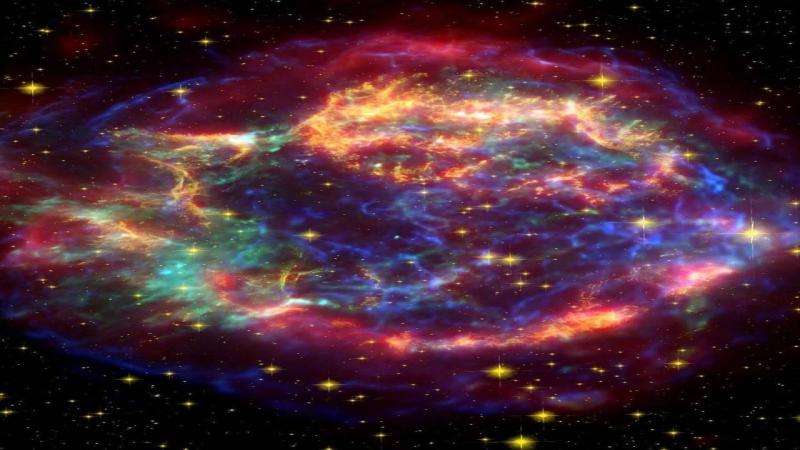NASA has published an impressive image on its Instagram account, showcasing the remnants of the immense explosion of the star "Cassiopeia A," which is 300 years old, in an event known as a supernova. A supernova is an astronomical event that occurs during the final stages of a massive star's life, characterized by a tremendous stellar explosion where the star ejects its outer layers into space at the end of its life. This process leads to the formation of an extremely bright spherical cloud around the star, and the energy from the explosion quickly disperses into space, turning into invisible objects within weeks or months.
The composite image captured by NASA using three telescopes shows the remnants of the 300-year-old stellar explosion, located about 11,000 light-years away from Earth. The different colors in this stunning image reveal a wealth of data, with infrared data captured by the Spitzer Space Telescope revealing warm dust in the outer shell at temperatures of about 10 degrees Celsius. The yellow color in the image displays a fine thread-like structure of gases heated to approximately 10,000 degrees Celsius, while the green and blue colors show data from X-ray emissions depicting hot gases. These hot gases likely originated when the material ejected from the supernova collided with surrounding gas and dust at a speed of about 10 million miles per hour!




